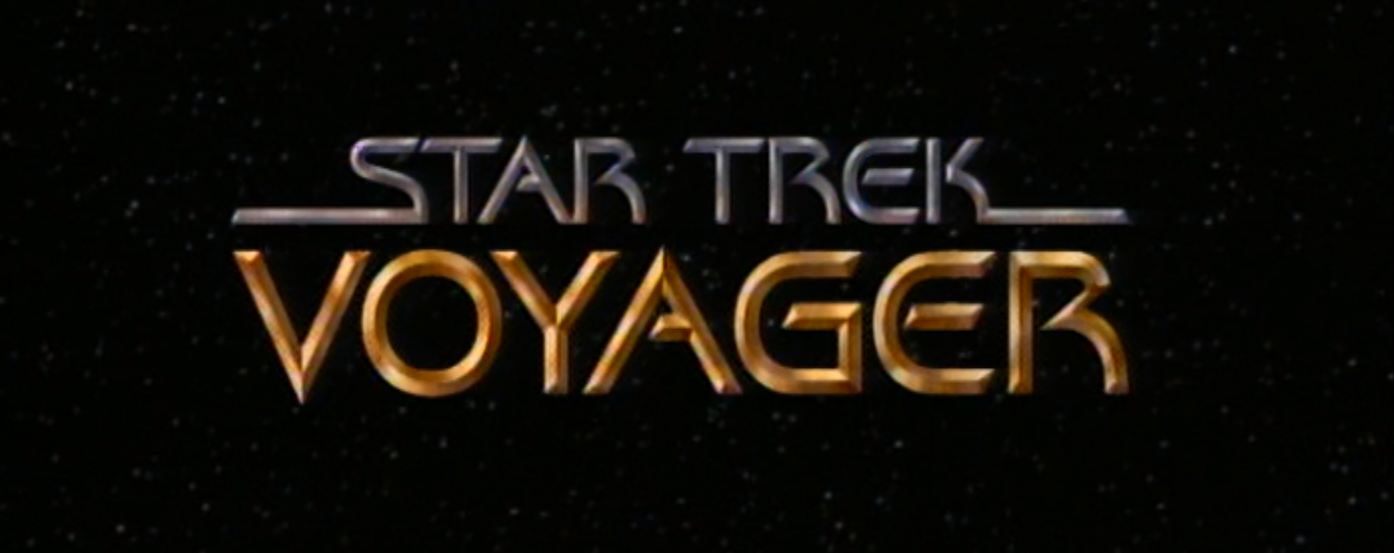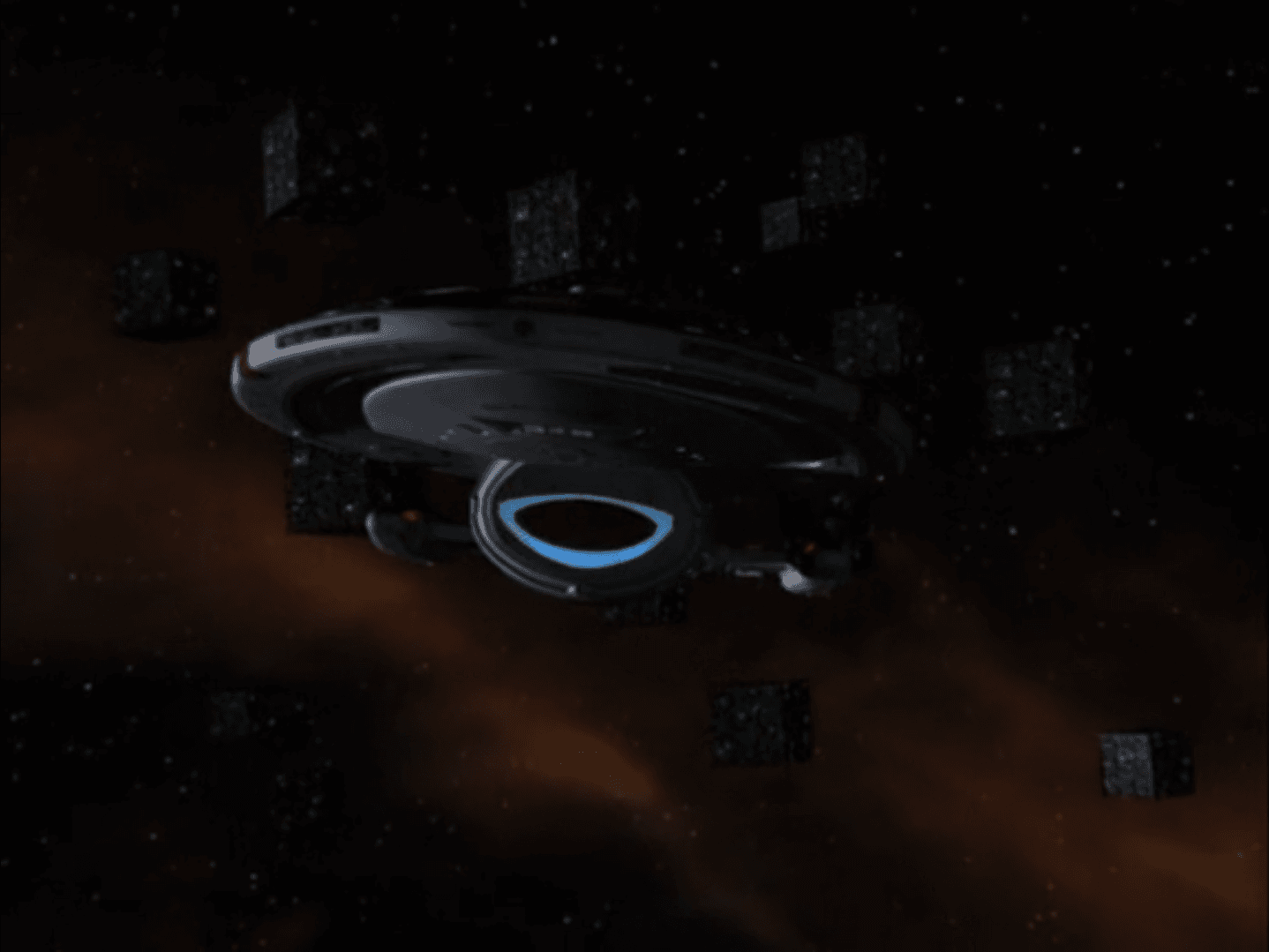
Welcome once again to ‘Final Frontier Friday’! What started as a look back at ‘I, Borg‘ to set the stage for a foray into film with ‘Star Trek: First Contact‘ has turned into a veritable Borg binge. And because I know better than to mess with a groove when I’m in one, today we’re continuing that binge with ‘Scorpion’, which served first as the third season finale and ultimately, as a turning point for ‘Star Trek: Voyager’.
By the end of the show’s third season, one thing became abundantly clear: The Borg were coming to ‘Star Trek: Voyager’. In the course of that season, everyone’s favorite bionic zombies were teased in the ominous closing moments of ‘Blood Fever’ and soon after featured prominently (after a fashion) in ‘Unity’. The bottom line was clear. After three years in the Delta Quadrant, Voyager’s path home was taking them rapidly in the direction of Borg territory.
But while an encounter with the Borg might have seemed like a foregone conclusion (especially given a line of dialogue in ‘First Contact’ that explicitly established the Borg as having a centuries-long presence – and implied origin – in the exact part of the galaxy where Voyager had been stranded), there was nonetheless a debate among the show’s writing staff as to whether or not they should actually pull that trigger. This was at least partly because of ‘Star Trek: First Contact‘ and the Borg’s recent (and seemingly definitive) defeat at the end of ‘Star Trek: First Contact’, which arrived in theaters midway through the season. In fact, the original idea for the season finale didn’t involve the Borg at all, but rather the (apparent) return of the Voyager crew to Earth in the form of what would have been revealed as biomimetic doppelgangers. Dissatisfaction with the shape that story was taking (elements of it would ultimately find their way into the episodes ‘Demon’ and ‘Course: Oblivion’) lead them to scrap the story in favor of something… else.
 In some respects, ‘Scorpion’ owes its inspiration to an image, namely that of a so-called “Borg graveyard” – the wreckage of a fleet of Borg ships. This was something that the ‘Voyager’ writers (Brannon Braga in particular) had unsuccessfully tried to bring to the screen in ‘Unity‘. Though the ‘Voyager’ staff’s plans for the Borg had not originally gone much beyond ‘Unity’, that image of a Borg graveyard stuck with Braga. Originally, it was intended as a payoff of sorts to ‘Star Trek: First Contact’. In essence, Voyager would have come across a bunch of Borg that had dropped dead in the wake of the Queen’s death in the film and eventually they would have started coming back to life to menace our heroes. Obviously, that story never came to pass. Instead, in the reimagined version of the story, those dead Borg were slain by a new enemy: Species 8472.
In some respects, ‘Scorpion’ owes its inspiration to an image, namely that of a so-called “Borg graveyard” – the wreckage of a fleet of Borg ships. This was something that the ‘Voyager’ writers (Brannon Braga in particular) had unsuccessfully tried to bring to the screen in ‘Unity‘. Though the ‘Voyager’ staff’s plans for the Borg had not originally gone much beyond ‘Unity’, that image of a Borg graveyard stuck with Braga. Originally, it was intended as a payoff of sorts to ‘Star Trek: First Contact’. In essence, Voyager would have come across a bunch of Borg that had dropped dead in the wake of the Queen’s death in the film and eventually they would have started coming back to life to menace our heroes. Obviously, that story never came to pass. Instead, in the reimagined version of the story, those dead Borg were slain by a new enemy: Species 8472.
Though not the first fully computer-animated alien in ‘Star Trek’ history (that honor goes to the Crystalline Entity seen in the first season of ‘The Next Generation’), Species 8472 was nonetheless groundbreaking as the first, well, species (as opposed to individuals) to be fully CGI. They also featured much more prominently in the story than their predecessors, interacting directly with the human actors in a way that the Crystal Entity or the Hanonian land eel simply hadn’t been required to.
And of course, they were also intended as a recurring antagonist. The script, though, was notably light on physical description, doing little more than establishing them as non-humanoid and (in at least one draft) exceptionally tall. Their realization thus fell to the visual effects team. Citing ‘Day of the Triffids’ as an inspiration, visual effects producer Dan Curry went to work. The final product was an amalgamation of design elements from several sketches (a neck here, an arm there…). The design was also influenced by descriptions of the creature in action and served to further contrast them with their nemesis. So where the Borg had strength in numbers, a single member of Species 8472 could viciously carve its way through a roomful of drones, particularly with the element of surprise.
All of that adds up to an episode with a lot on its plate. In addition to ending the season (with a cliffhanger no less), it had to serve as a follow up (however loosely) to the franchise’s latest feature film, introduce a new villain, and set the stage for some specific developments early in the next season. That’s a lot to ask of any hour of TV. But this is ‘Star Trek’, and ‘Star Trek’ has a history of going for broke at the end of a season. It’s just a question of whether or not they can stick the landing.
